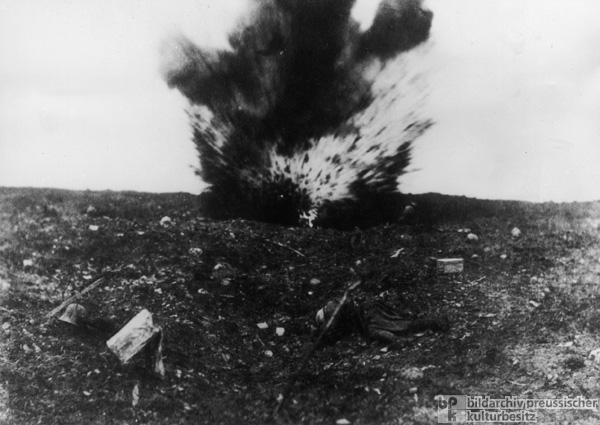













INTRODUCTION | DOCUMENTS | IMAGES | MAPS | EDITOR
|
This photograph of a heavy grenade exploding in the fortification ring at Verdun testifies to the devastating effects of firepower in World War I. Although artillery had been part of warfare since ancient times, heavy guns only came into use after industrialization spurred significant innovations in military equipment. The American Civil War (1861-1865) and the Franco-Prussian War of 1870/71 had already seen a dramatic increase in artillery firepower but nothing comparable to the concentration, range, and explosive force of shells fired by heavy mortars like Krupp’s legendary 42-cm “Big Berta,” which was primarily used to destroy modern fortifications of steel and concrete. In the Battle of Verdun (February to September 1916), as in other operations, artillery was massed on an unprecedented scale in a limited section of the front. In this case, bombardment was part of the German offensive strategy to inflict as many casualties as possible and wear down French morale. This strategy was based on the calculations of German Commander in Chief Erich von Falkenhayn (1861-1922), who believed – wrongly, as it turned out – that the French nation would prove inferior to the Germans in this battle of attrition. The minimal gains brought by this futile offensive were overshadowed by the staggering number of casualties – more than 700,000 overall on both sides – and transformation of the landscape into a shell-pocked wasteland. Photo by unknown photographer, 1916.
© Bildarchiv Preußischer Kulturbesitz |
 print version
print version return to image list
return to image list previous image
previous image
